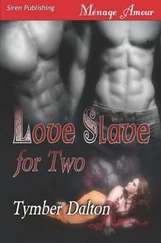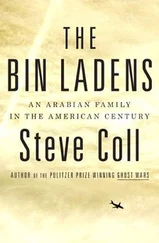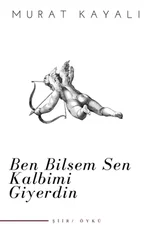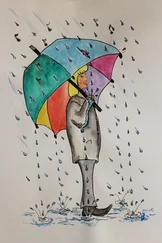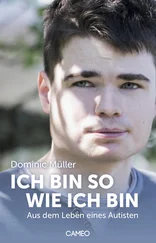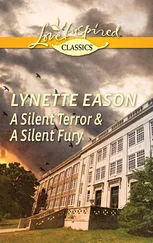In Delta, big-boy rules apply.

As things came together, we broke another operator, Ski, away from a staff job he had been assigned to do at Bagram to go down to the Jalalabad safe house and give Shrek some company. Ski was more than happy to get away from the computers in order to have the possibility of some action. A Green Beret in his previous life, Ski’s jet-black hair hung unevenly from under his wool hat, reached his collar in the back, and hid his forehead and even his eyebrows in the front. His beard was so thick that it ran up his cheeks to just below his eyes. When he spoke, it almost seemed as if a ventriloquist were nearby, because if you were hard of hearing, the only indication that he was talking was the jerky up-and-down movement of the Marlboro cigarette between his lips.
Shrek and Ski sent back photos and exact grid coordinates of Mr. Gul Ahmed’s residence, and our intelligence shop confirmed it was the same building we originally suspected based upon our conversations with the CIA and the Alabama Green Berets. With that information, it was time to launch.
Shrek also had solved the mystery of a strange and eerie monument that had defied identification by our imagery analysts.
Standing just to the east of the Ahmed home was a large rock formation that appeared naturally left after thousands of years of flowing river water following centuries of melted winter snow snaking down from the mountains. The large rock was roughly the size of eight tractor-trailers all turned on their noses, with their tails straight up, and glued together at their sides. It appeared on the imagery as a giant rectangular cube with rounded edges.
A worn footpath wound around the rock and ended at the top, where a small mosque was under construction. The doorway was visible on the east side, a design that allowed an entering Muslim to face to the west-toward Mecca, birthplace of the Prophet Muhammad-to perform his daily prayers.
Outside the square mosque were the mounded, rock-covered graves of al Qaeda fighters killed during the previous battle of Tora Bora. They were at peace in paradise now, exactly what they wanted. There were at least fifty individual graves, complete with individually carved tree trunks and makeshift limbs of various lengths pointing skyward. Six to ten feet high, these staffs were adorned with red, green, white, tan, or blue scarves, flags, or torn pieces of clothing that the fallen warrior had worn in battle. The colored banners and pennants fluttered and waved peacefully in the wind.
It crossed our minds that Usama bin Laden might actually be buried in that graveyard, which was already well known locally as an al Qaeda monument and was becoming a popular stop for Muslims desiring to pay their respects to the martyrs.
It was logical that if Ahmed had provided shelter for bin Laden, and if the ailing al Qaeda leader had succumbed to his wounds and expired, then moving his body several hundred feet to this memorial was not out of the realm of possibility. We pulled out photo imagery from the past year that showed the mosque was constructed several months after the battle.
This thought, however intriguing, quickly moved into the too-good-to-be-true category. It would have been virtually impossible to hide a burial site of bin Laden that was so accessible to tourists and the faithful.
Nevertheless, the place was a stark reminder of the cost of war. We were happy that these Tora Bora fighters had paid the ultimate price.

First blood was spilled on our mission before it really got under way. At midafternoon, we piled into some pickup trucks for the short drive out to the MC-130 Combat Talon aircraft that was waiting for us on the asphalt runway, with her engines already turning. When one of the pickups took a sharp turn, a large piece of equipment shifted in the cargo bed, smacked a young operator named Rip square in the nose and catapulted him out of the bed of the truck. His Kevlar helmet and body armor protected him upon impact with the runway.
Our medic, Durango, went to work to stop the facial bleeding and mend the wounds enough to get him on the plane, although I think Rip did not know where he was for a few minutes. After we loaded and took off, I made my way over to Rip, who was staring straight ahead, stoic as ever, and holding a bandage on his nose. His dark beard was matted with the thick red blood, adding even more menace to the long wavy hair and piercing eyes. I bent over to his ear and yelled to be heard over the engine roar. “You gonna make it?”
Rip nodded vigorously in the affirmative, clearly in no mood for small talk.
“It’s no big deal if you can’t go on. We can leave you on the plane and they’ll bring you back,” I yelled.
Rip snapped his head up, locked on to my eyes and yelled, “I’ll be okay, and I’m good to go!”
His manner said more than his mouth. I did not need to hear the words, because his look had delivered the message loud and clear: Do not dare to leave me out of this mission! I’m going all the way to the target . It was exactly what I expected. I slapped him on the shoulder, smiled, and let him be.

It was still daylight when our Combat Talon touched down in Jalalabad, where Ski and Shrek waited at the end of a secluded taxiway. We offloaded our gear and moved it immediately to the cargo trucks, then Shrek and Ski gave the team leaders a final intelligence dump. We arrived at the airfield with the assault plan, but were depending on Ski and Shrek to figure out how to get us there.
They told us that we would have to negotiate three known roadblocks to reach our destination in the mountains. The first two were expected to be relatively benign, just several militiamen and tribal thugs shaking down commuters for whatever tolls they could get. This assumption came from some local Afghan militiamen hired by the CIA, who believed we could move through those two points if we just held our breath. The checkpoint guards would not act as long as there were no indications that our trucks contained anything more than ordinary supplies being hauled to the needy somewhere in that region. Even with these assurances, we remained concerned. In commando-speak, such locations were referred to as “friction points,” and caution was required.
Shrek and Ski had come up with some ingenious planning to get through the third roadblock, which was more complex. A small sedan would travel with us but stay far enough from our convoy to keep the signature low. In the car would be four Afghan militiamen who were on the payroll of the CIA and had been trained by the Green Berets. Once the trucks were two thousand meters short of the roadblock, the sedan would speed around us to the checkpoint, the militiamen would jump from the car with their guns raised, and demand the guards drop their weapons or else. If a gunfight broke out, we would reinforce them. If, instead of gunfire, we saw three flashes of a red lens flashlight, it was safe to proceed. Sounds simple, doesn’t it?
Ski and Shrek would be in the truck cabs because they looked more local than the rest of us. We wanted them not only to look local but to also smell like filth because they would need every bit of that indigenous charade for this to work.
With the plan in place, we had no worries.
The ever-thoughtful Ski amazingly had found about twenty thick foam mattresses in a variety of colors, which were welcome additions to our trickedout cargo trucks. We expected a good amount of bouncing and jerking from side to side on the trip as the trucks navigated streambeds studded with boulders the size of basketballs, washed-out pathways, and gigantic potholed sections of war-ravaged roadway.
Читать дальше







